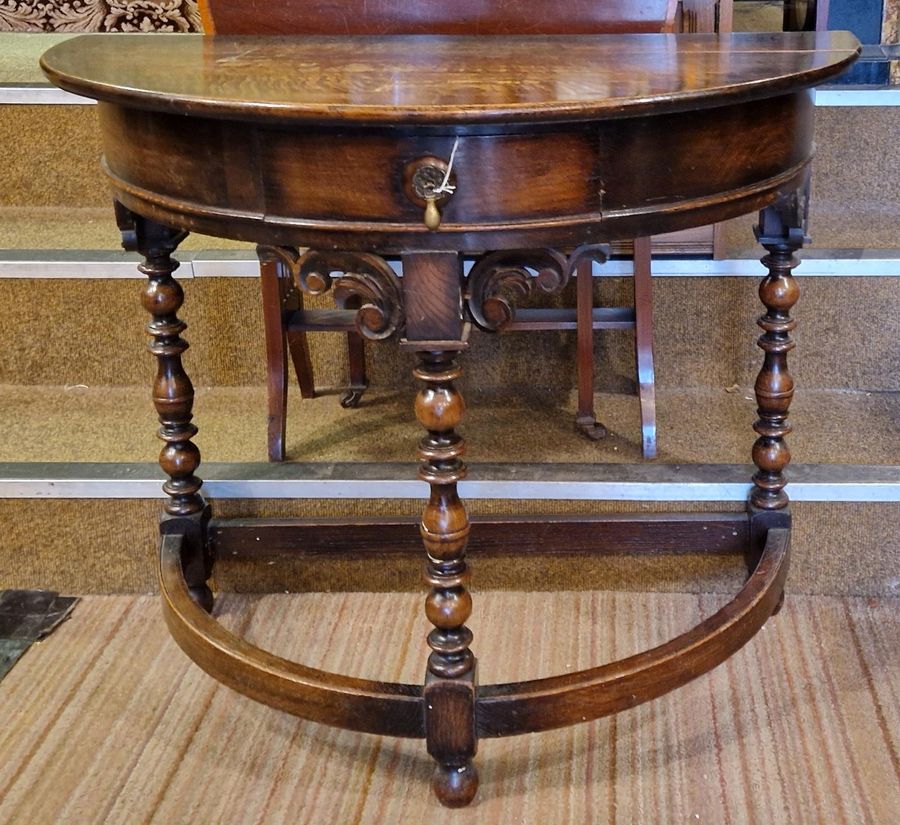A beautiful Antique French burr walnut and parcel gilt mirror, circa 1880 in date.
The rectangular mirror features a shaped crest with anthemion, a central gilt masque and further gilt foliate and floral ornamentation.
It has its original charmingly distressed mirror plate framed in between fluted Corinthian columns.
The mirror is certain to make a charming addition to that one special room in your home.
Condition:
In excellent condition with its original mirror plate, gilding, painting and patina, please see photos for confirmation.
Dimensions in cm:
Height 144 x Width 89 x Depth 11
Dimensions in inches:
Height 4 foot, 9 inches x Width 2 foot, 11 inches x Depth 4 inches
Our reference: A2658
Mirrors
are commonly used forpersonal groomingor admiring oneself (in which case thearchaic termlooking-glassis sometimes still used), decoration, and architecture.
The earliest manufactured mirrors were pieces of polished stone such as obsidian, a naturally occurring volcanic glass.In classical antiquity, mirrors were made of solid metal (bronze, later silver) and were too expensive for widespread use by common people; they were also prone tocorrosion. Due to the low reflectivity of polished metal, these mirrors also gave a darker image than modern ones, making them unsuitable for indoor use with the artificial lighting of the time.
The method of making mirrors out ofplate glasswas invented by 16th-century Venetian glassmakers on the island ofMurano, who covered the back of the glass withmercury, obtaining near-perfect and undistorted reflection.For over one hundred years, Venetian mirrors installed in richly decorated frames served as luxury decorations for palaces throughout Europe, but the secret of the mercury process eventually arrived in London and Paris during the 17th century, due to industrial espionage. French workshops succeeded in large scale industrialization of the process, eventually making mirrors affordable to the masses.
Walnut & Burr Walnut
Walnut is a hard, dense, tight- grained wood that polishes to a very smooth finish. It is a popular and attractive wood whose colour ranges from near white in the sapwood to a dark hew in the heartwood. When dried in a kiln, walnut wood tends to develop a dull brown colour, but when air-dried can become a rich purplish-brown. Because of its colour, hardness and grain, it is a prized furniture and carving wood. Walnut veneer was highly priced and the cost would reflect the ‘fanciness' of the veneer – the more decorative, then the more expensive and desirable.
Burr walnut refers to the swirling figure present in nearly all walnut when cut and polished, and especially in the wood taken from the base of the tree where it joins the roots. However the true burr is a rare growth on the tree where hundreds of tiny branches have started to grow. Burr walnut produces some of the most complex and beautiful figuring you can find.
Walnut "burrs" were often used to make fabulous furniture. Veneer sliced from walnut burl is one of the most valuable and highly prized by cabinet makers and prestige car manufacturers and is also a favourite material for shotgun stocks.
Inlay was commonly used in the production of decorative burr walnut furniture, where pieces of coloured veneers are inlaid into the surface of the walnut, adding delicate or intricate patterns and designs. Inlays normally use various exotic veneers, but other materials such as mother-of-pearl, brass or bone were also be used.
Antiques.co.uk Ref: K43WEB8D4
- Width (cm):
- 89
- Height (cm):
- 144
- Depth (cm):
- 11
Here on antiques co uk we love antiques and specialise in selling antiques. Even though this item was for sale and is now sold or otherwise now unavailable we have many more items for sale including vintage antiques, silver, tables, watches, jewellery and much more for your interiors and home.
Search all the antiques currently for sale on www.antiques co uk. Or why not consider selling your antiques and making sales more easily with us!

![Small Georgian Oak Bureau Bookcase]() £495.00
£495.00![Good 18ct Oak Trunk]() £420.00Victoria Antiques Cornwall
£420.00Victoria Antiques Cornwall![Edwardian Armchair]() £250.00Victoria Antiques Cornwall
£250.00Victoria Antiques Cornwall![Charming Oak Demi Lune Hall Table C1900]() £250.00
£250.00










